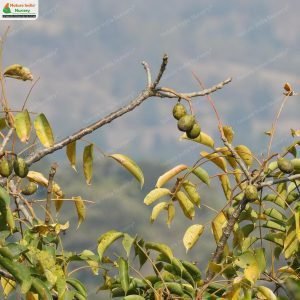Spondias pinnata, commonly known as the Hog Plum, is a deciduous tree that can grow up to 25 meters tall. It has a straight trunk and a spreading crown, with large, pinnately compound leaves featuring 5-11 pairs of leaflets. The flowers are small, white, and appear in dense, terminal panicles, while the fruit is an ellipsoid to ovoid drupe, olive green when young and turning yellowish-orange at maturity. Native to the Indian subcontinent and Southeast Asia, including the Philippines, Indonesia, and the Solomon Islands, the tree is commonly found in lowlands and hill forests up to 1,200 meters in elevation.
The Hog Plum’s ecological significance extends beyond its physical characteristics, as it provides a valuable food source for various wildlife species, including birds and small mammals. Its flowers attract bees and other pollinators, contributing to its success in its native habitats.
Habitat
Spondias pinnata is native to the Indian subcontinent and Southeast Asia, including the Philippines, Indonesia, and the Solomon Islands, and is commonly found in lowlands and hill forests.
Planting and Care
-
Propagation: Through seeds.
-
Soil Preference: Prefers well-drained soils. Can tolerate a range of soil types.
-
Sunlight and Water: Thrives in full sun. Requires moderate watering, especially during dry periods.
Additional Information
-
Economical Values: The fruits are edible and have a sour taste, often used in pickles and chutneys.
-
Medicinal Uses: Various parts of the tree are used in traditional medicine to treat digestive disorders, skin diseases, and other ailments.
-
Other Uses: Leaves and bark are used for dyeing and tanning.
-
Wildlife Significance: Attracts pollinators like bees and other pollinators. The fruits provide food for various birds and small mammals.




































